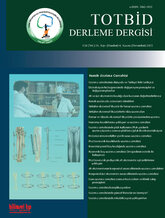
One of the most commonly used techniques in femoral lengthening surgery is the Ilizarov circular external fixator method, which is based on the principle of distraction osteogenesis, wherein biomechanical stimuli trigger biological responses. Distraction osteogenesis is a regenerative phenomenon whereby new bone and soft tissue formation is induced through the gradual and rhythmic distraction of bone segments following an osteotomy. This process affects not only bone tissue but also enables the simultaneous elongation of muscles, nerves, blood vessels, and connective tissues. The main biological mechanism of this process is known as the tension-stress effect, a concept introduced by Ilizarov. It proposes that controlled mechanical tension stimulates key regenerative events such as cellular proliferation, angiogenesis, and osteogenesis. In response to the applied mechanical stimulus, the body initiates a physiological process that leads to new tissue formation and allows for sustained bone elongation. Based on these biological principles, the Ilizarov method facilitates both limb lengthening and simultaneous deformity correction. Although certain complications may arise during the course of treatment, appropriate patient selection, meticulous surgical execution, and coordinated multidisciplinary follow-up can significantly reduce these risks. In summary, the Ilizarov technique, which relies on the principles of distraction osteogenesis, remains a biologically based and clinically effective treatment option in modern femoral lengthening surgery.